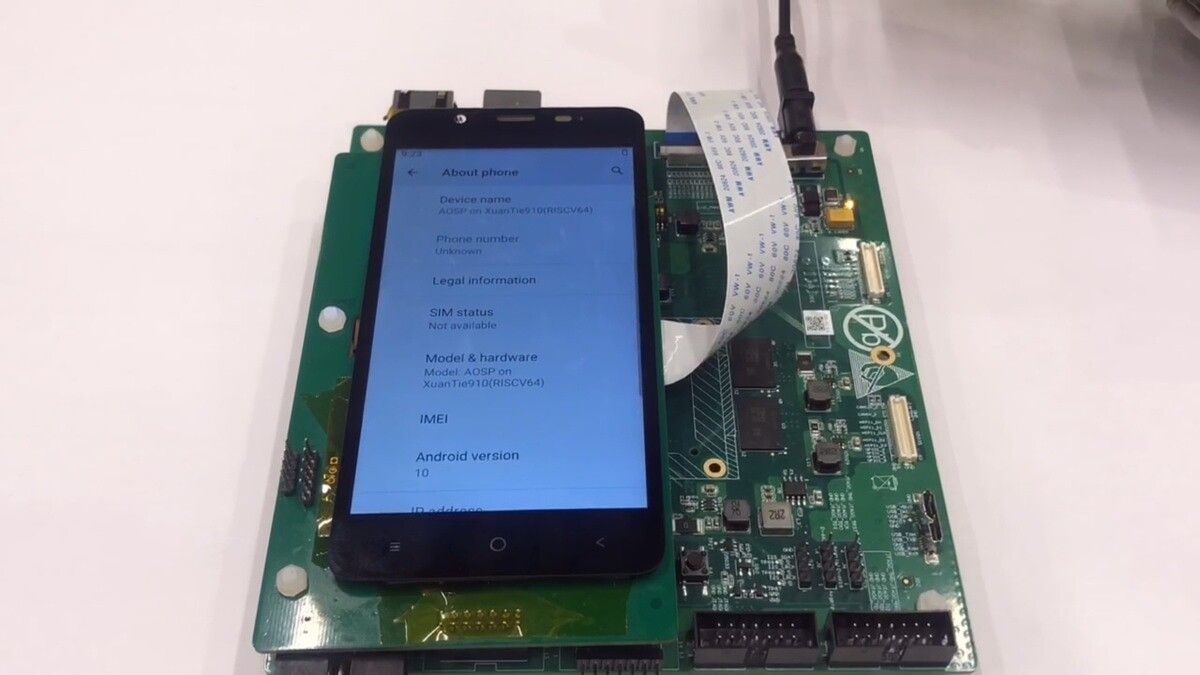Google's Android operating system currently supports a handful of instruction set architecture (ISA) families, including ARM and x86. The vast majority of smartphones, tablets, TVs, and smartwatches that run Android today feature ARM-based chipset designs, as Intel has long since abandoned its handset CPUs while support for MIPS was dropped with NDK revision 17. While Google does not officially provide support for compiling Android on hardware based on the open RISC-V ISA, several development teams are working to run AOSP on RISC-V hardware. One such effort is led by T-Head, the business entity of Alibaba specializing in semiconductors, which today announced that they've successfully ported Android 10 onto its in-house RISC-V hardware.
A few months ago, PLCT Lab successfully booted Android to a command-line interface on a 64-bit RISC-V core emulated in QEMU. The team launched a project on GitHub they're calling "AOSP for RISC-V" and are still in the early stages of cross-compiling AOSP and booting to a GUI. Meanwhile, T-Head, which designed the ICE SoC with its in-house, RISC-V-based XuanTie C910 cores, has managed to boot Android 10 with working graphics and touch.
It runs quite slowly, as you can see in the video embedded below, but this is to be expected given the status of this port and the hardware it's running on. In the video, a couple of stock AOSP applications are launched, including the clock app, the contacts app, and the mail app. More complex applications such as games aren't shown off on this prototype as these apps would likely need to be recompiled to target RISC-V.
https://occ-oss-prod.oss-cn-hangzhou.aliyuncs.com/registerUrl/undefined/1611216336818/normal_video121.mp4
This Android 10 port is based on the android10-release branch in AOSP, and the source code developed by T-Head can be found on the company's GitHub page.
This is an exciting development for the open hardware community. Since RISC-V is a free and open ISA, anyone is free to design chips based on it without paying any licensing or royalty fees. That doesn't prevent companies from extending RISC-V with custom instruction set extensions — after all, RISC-V has a permissive license — but it does significantly lower the barrier to entry for new companies seeking to design their own chips. Vendors that want to make cheap IoT products will be interested in using RISC-V to develop low-cost chips, while companies seeking to reduce their dependence on competitors or foreign entities will also express interest. With NVIDIA acquiring ARM and the U.S. government forcing ARM to cut ties with Huawei, we'll undoubtedly see more and more interest in RISC-V from tech firms around the world. Unfortunately, it will be difficult to actually tell just how much traction RISC-V is gaining since there's no requirement for vendors to disclose its usage.


